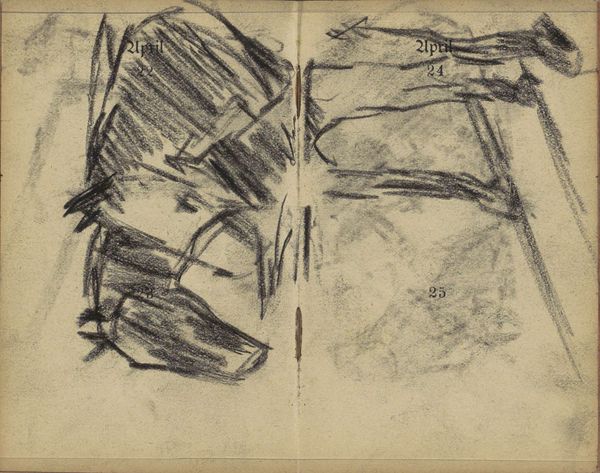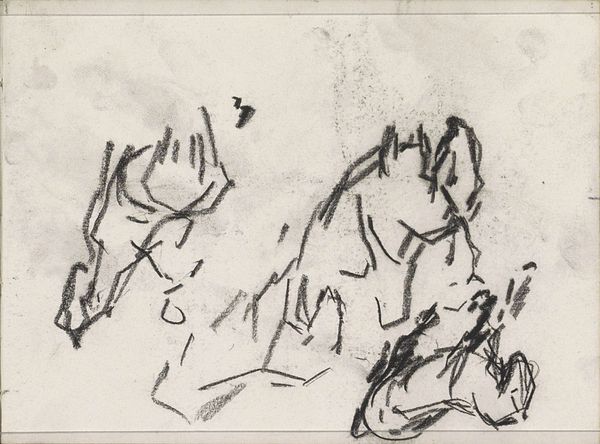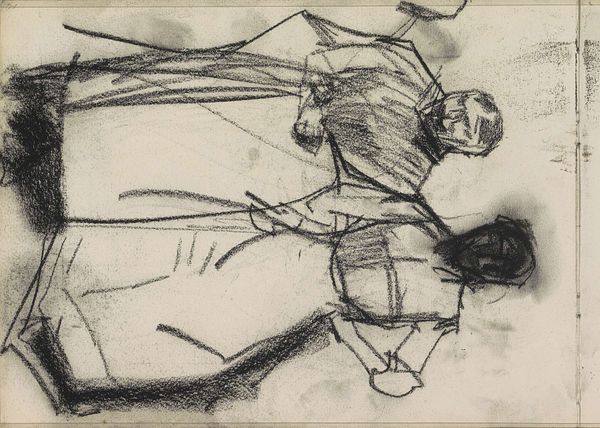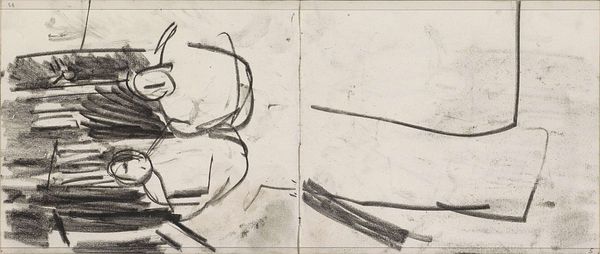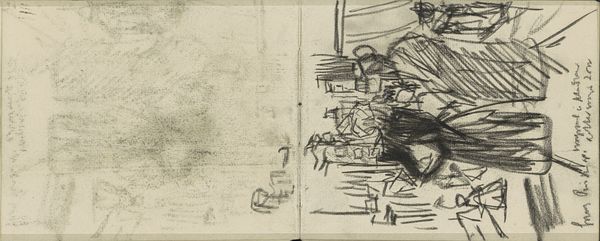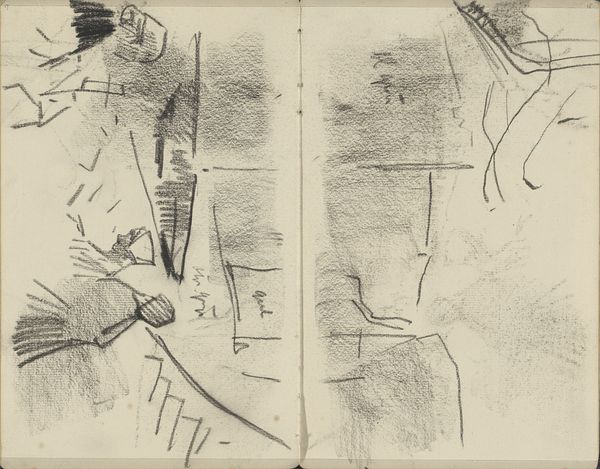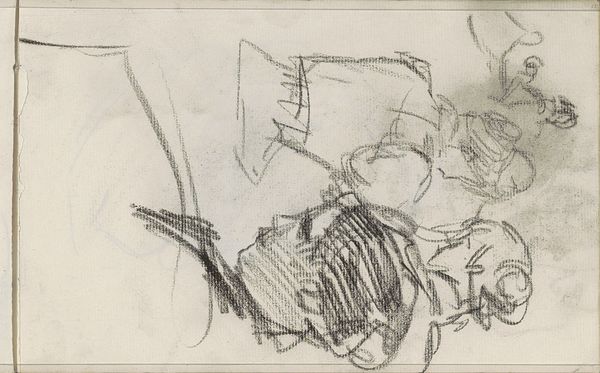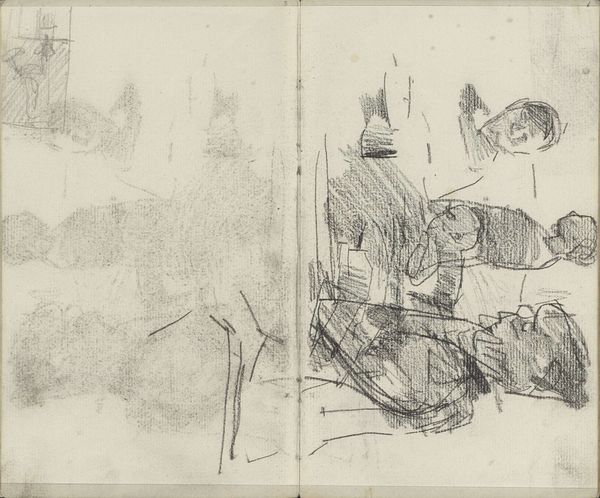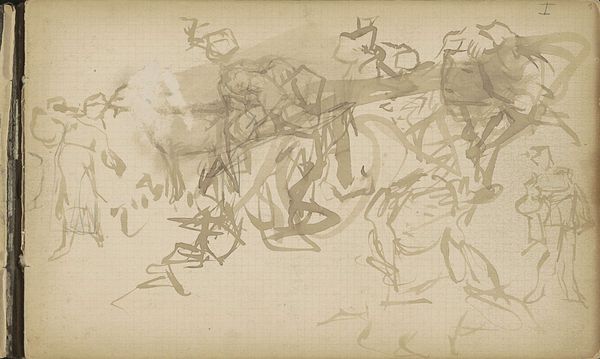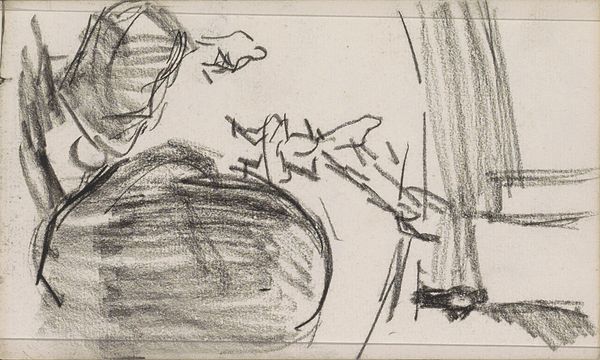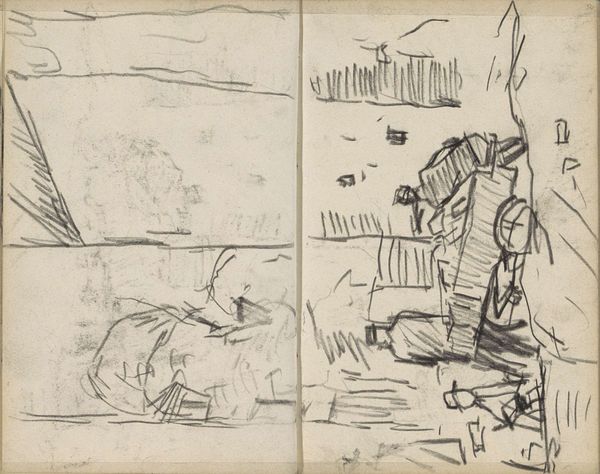
Copyright: Rijks Museum: Open Domain
Curator: Isaac Israels created this compelling work on paper using ink around the turn of the century. It’s titled, “Three Women Talking by a Canal.” Editor: My first impression is that it feels incredibly intimate, like a fleeting glimpse into a private moment. The loose, sketch-like quality emphasizes its spontaneity, and almost... voyeuristic? Curator: It’s precisely this immediacy that captivates me. The incomplete quality emphasizes the fleeting moment Israels captured; three women engaged in conversation near a canal, frozen in time with just a few sparse strokes. Editor: I wonder, what might their lives have been like? What challenges would they have faced at the time? Considering that women were gaining traction in labor and suffrage movements around that period, you almost imagine those themes surfacing during their canal-side chat. Curator: The symbolic weight of a canal, though often overlooked, offers layers of cultural reading here. Water symbolizes life, fertility, transition... perhaps the women are at a turning point. I perceive a shared moment, amplified in its impact by how deftly it pulls familiar themes into focus through common forms. Editor: Do you think there is anything to read from his limited composition palette, or is it merely due to its sketchy format? As women have been frequently cast into black and white roles by patriarchal societies, these inky monochromatic contrasts seem to underline gender norms. Curator: That is an insightful observation. It is interesting that a work can carry that many dimensions, both symbolic and formal at once, through what seem at first like simple and immediate gestures! There is much to absorb about how his marks create not just the appearance, but something more. Editor: Agreed. Even in its incomplete form, this artwork invites reflection about intersectional identity. Israels documented the intimate lives of women in their environment while allowing us, as modern viewers, to reconstruct forgotten pieces in our collective memory. Curator: It is a reminder of how art is often in collaboration with those who witness it, a living document that persists far beyond the time in which it was originally recorded, growing with insight. Editor: It seems even incomplete or preliminary art contributes substantially towards shaping historical narratives about overlooked actors or events from centuries gone by.
Comments
No comments
Be the first to comment and join the conversation on the ultimate creative platform.
